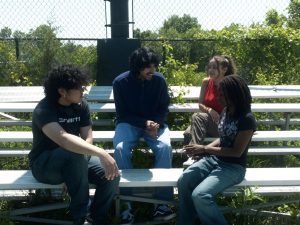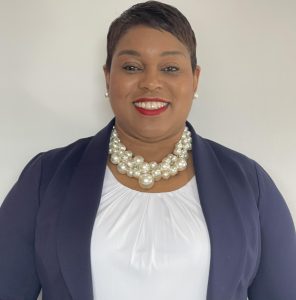Doing Their Part: Environmental Club Raising Awareness
PB Environmental Club Focused on Future

Cosmos is a seven-month old Terrapin that the Environmental Club collects data on and reports to the Baltimore Aquarium.
February 21, 2017
Imagine you’re walking to the mall with your friends when you see a plastic bottle lying on the floor next to the recycle and garbage bins. You contemplate whether to leave it for someone else to take care of or look like a nerd by placing it in the recycle bin. What if I told you that your choice could save the world?
Concern for the state of our environment has increased significantly in recent years, which makes sense if you examine to what extent the planet is currently suffering.
While the famous stories of coastal regions like Florida and islands “drowning” are a bit of a stretch, other environmental changes are occurring that will soon drastically impact our way of life. According to National Geographic, chlorofluorocarbons (CFC’s) and other waste gases are tearing holes in the ozone layer, causing warmer winters and speeding up the gradual heating of the planet. According to NASA, polar ice caps and sheets are melting and sea levels continue to rise, causing the rate of tidal floods and other natural disasters to increase after storms, high tides, and temperature changes.
According to AP Environmental Science teacher Mrs. Karen Sondak, well-developed nations, which account for only 20% of the world’s population, consume about 80% of the world’s resources, both natural and produced. This disproportionality in consumption of resources as well as the other significant issues are major components of why many schools across the country have an Environmental Club, including ours.
Mrs. Sondak sponsors the Paint Branch High School Environmental Club and founded the club when she first started teaching at the school about 11 years ago. In addition to teaching AP Environmental Science, she works with the members of the club on Adopt-A-Road cleanups, hunger banquets, and various projects to help the school’s students practice more environmentally-friendly habits and expose them to environmental science’s involvement in their everyday lives. The club also educates members on environmental issues, encouraging them to become critical thinkers who will make the right decisions that lead to a larger potential for significant global climate solutions.
“The purpose of the Environmental Club is really to oversee what happens at the school with regard to recycling, energy conservation,” says Mrs. Sondak. ”That’s really why we were founded.”
The most prominent action of the club is recycling and influencing students to recycle. This includes after-school recycling, making posters for recycling, and collecting recycle bins from classrooms during the day. In doing so, they are conserving natural resources like water and timber, saving energy, and reducing greenhouse gas emissions. The Environmental Protection Agency lists more benefits of recycling in addition to those, such as sustainment of the environment for future generations, reduction of waste, and prevention of pollution.
The club’s longest-running and most-successful project, dubbed “Turtle Care,” involves a team of club members and many of Mrs. Sondak’s students in the raising of a Maryland Terrapin to maturity and returning it to Poplar Island in the Chesapeake Bay in the spring, which helps promote preservation of species. The now-fifteen-year-old project, run by the National Aquarium in Baltimore and affiliated with Ohio University, gives a head start to terrapins who could otherwise fall prey to predators like raccoons and foxes, allowing them to grow large enough to avoid these animals.
The club has distributed energy-conserving lamps to the school’s computer labs and will also organize a beautification and planting day, grow plants for the Rainscape Program in Montgomery County, and arrange a drive for supplies at the end of the year, in which they collect gently-used school supplies for less fortunate students. They frequently go on field trips to locations such as the Chesapeake Bay, recycling plants, and businesses involved with environmental protection and conservation.
A strong individual advocate for the environment, Mrs. Sondak promotes renewable energy sources and curbside recycling in her neighborhood and supports green companies that aim to minimize environmental deterioration. She also buys organic local foods, reduces, reuses, and recycles whenever possible and constantly looks for ways to conserve energy. Her husband also painted the mural encircling the grand staircase.
Mrs. Sondak would like to see more students involved with the club, as it allows for “…more hands on the ground, more people conscious of what they’re doing.” She adds, “It’s just the little things, like putting their recycling in the recycling bin instead of putting their recycling in the trash or putting their trash in the recycling bin.”
Partly thanks to the Environmental Club’s influence, Paint Branch High School has implemented many environmentally smart programs including classroom lights that automatically turn off after periods of inactivity, which helps conserve energy. The school also received its Green School Certification in 2014, which was achieved by the school being constantly involved in various projects to help energy conservation, as well as being certified as a LEED Certified building, meaning the school is a leader in resource efficiency and environmental design.
Mrs. Sondak will continue to sponsor the club and help improve the school’s environmental standing, striving to make the school a zero-waste school that would recycle everything and not generate any garbage, and stop the use of plastic bottles while promoting the use of individual refillable bottles.
Attending Environmental Club meetings every Thursday in room 1129, to which all are welcome, not only provides students with the opportunity to gain a number of SSL hours and feel good about doing something positive for their school and community, they also have the ability to easily gain knowledge on the natural resources and preservation of species.
Little things, such as being informed on climate change and other issues, saving money, and conserving energy “go a long way to reduce our carbon emissions,” says Mrs. Sondak, who also notes that it is good for our country and, ultimately, our planet. The Environmental Club reminds members of this every week. So, in this way, the greatest benefit of the Environmental Club is giving every student in the school a chance to be that person who recycles that random bottle and helps save the planet.













































Pam Leffler • Feb 24, 2017 at 8:19 AM
I thoroughly enjoyed reading this article. The writer did an excellent job of conveying the purpose and outcomes of being a member of the environmental club!
I am really proud to have Mrs. Sondak as a member of the science department. She is an amazing teacher and passionate environmentalist!!